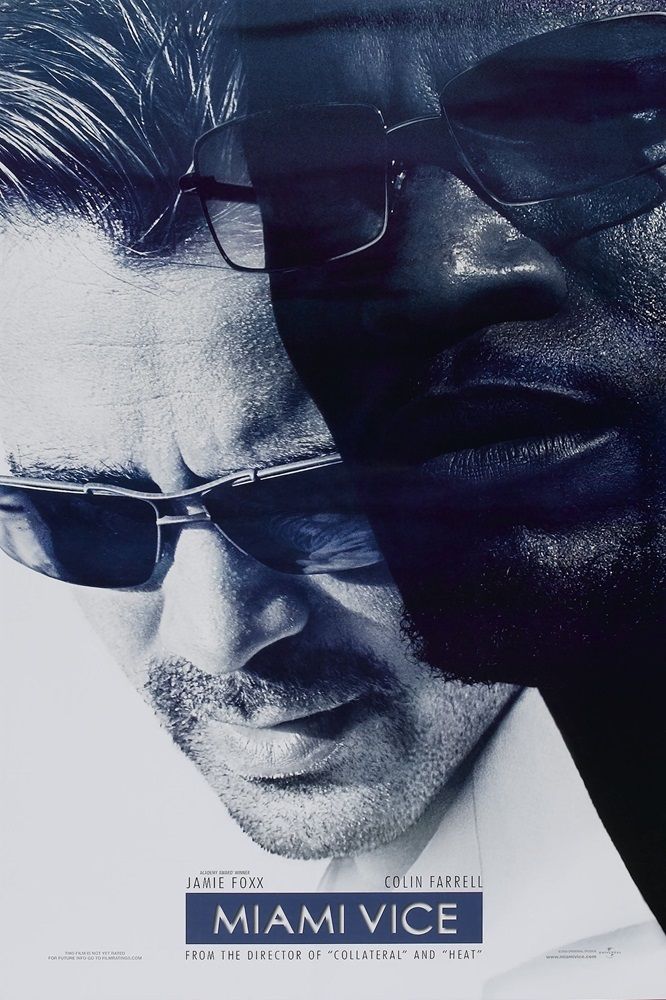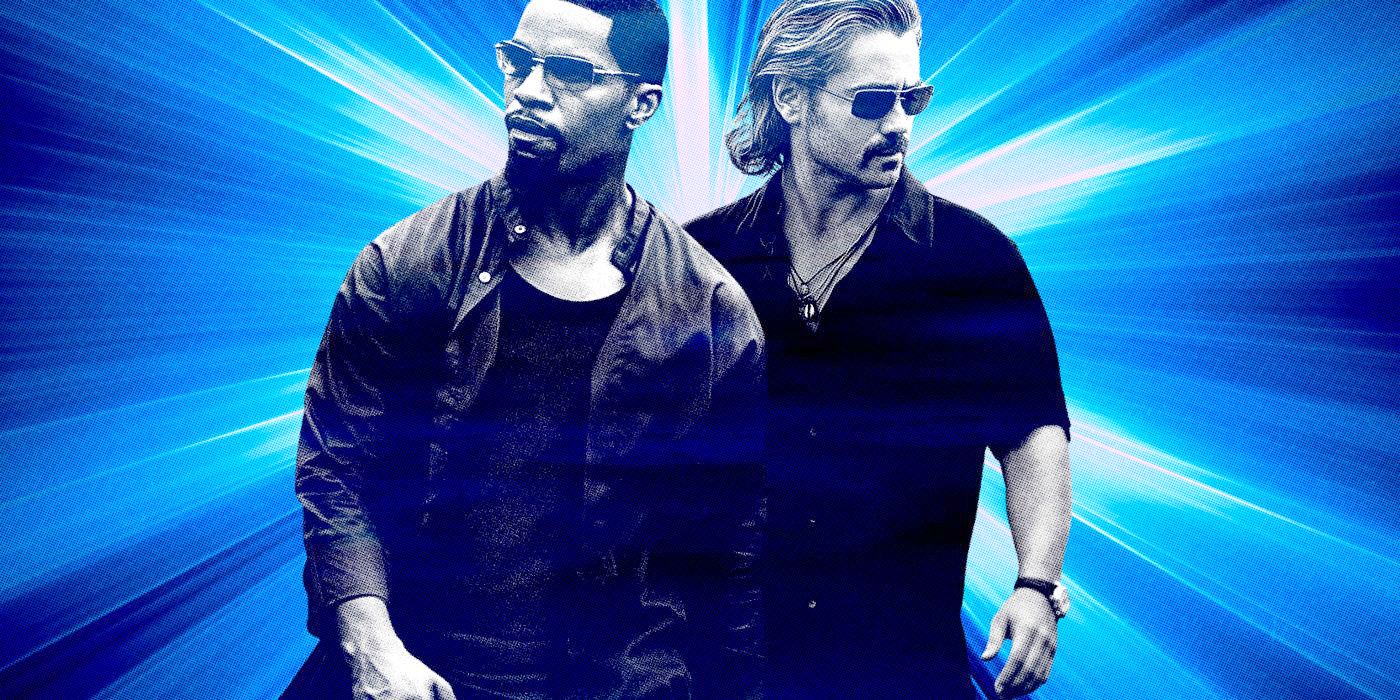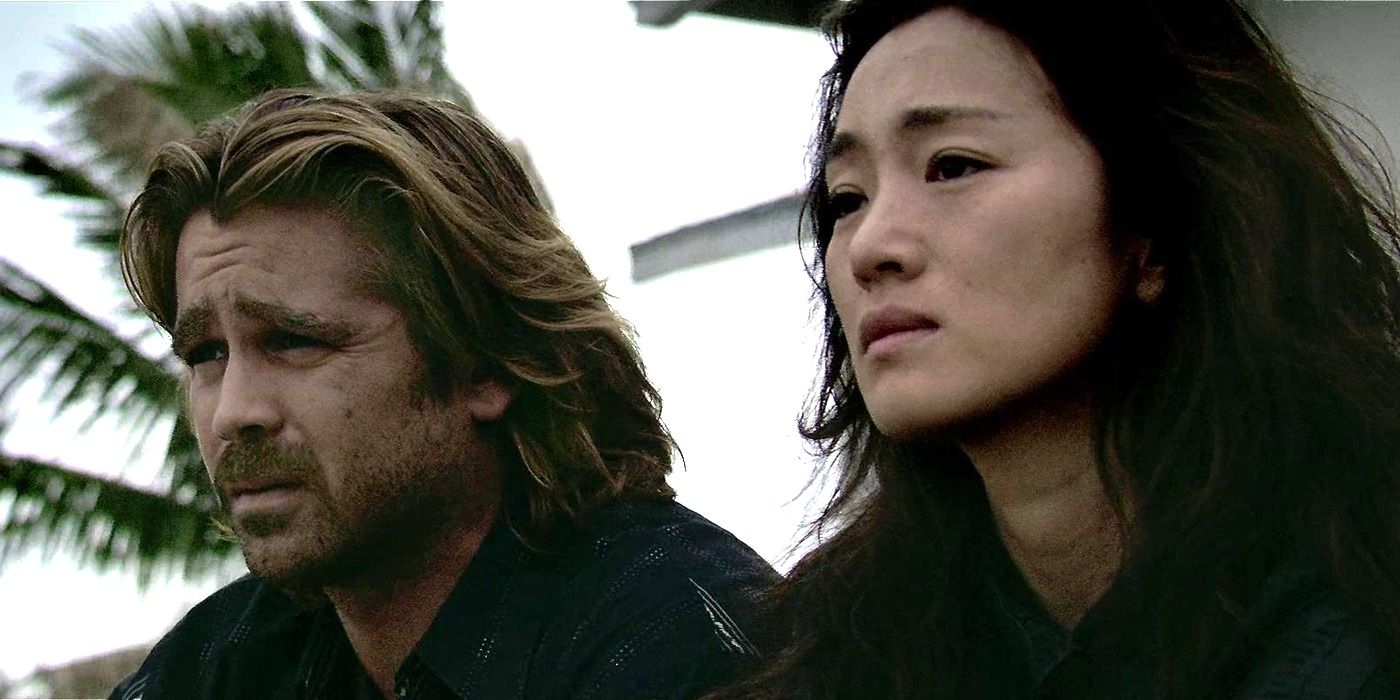Michael Mann’s polarizing film has a dreamy, digital aesthetic that has aged as well as the movie itself.
The Big Picture
-
Miami Vice
, directed by Michael Mann, is a critically re-evaluated cult masterpiece with a unique visual style and great performances. - The film’s use of digital cinematography creates a hyperreal quality and impressive depth of field that film cameras can’t easily capture.
- Michael Mann’s later films, including
Public Enemies
and
Blackhat
, also utilize digital filmmaking to reflect the evolving criminal landscape and embrace efficiency and innovation in production.
In 2006, audiences were thrown into the deep end when the film adaptation of the hit series Miami Vice was an esoteric and disorienting crime thriller that abandoned the tone and style of the source material. Michael Mann‘s efforts were divisive at the time, but Miami Vice has since been critically re-evaluated as a cult masterpiece by the auteur director. The film stars Colin Farrell and Jamie Foxx as Crockett and Tubbs, two undercover detectives involved in an investigation into a drug cartel between Miami and Cuba. Miami Vice has a lot going for it: the great performances by the leads, the dad-rock infused soundtrack, and Chinese screen legend Gong Li portraying one of the most nuanced and dynamic female characters in any of Michael Mann’s films, a financial advisor to the cartel named Isabelle who sparks a relationship with Crockett. However, one of the more divisive trademarks of the movie is its unusual visual style.
Shot on digital cameras by cinematographer Dion Beebe, Miami Vice has a uniquely clear, almost high-speed look. Watching it now for the first time, you might think your TV settings are not correct, because it does not look like most movies. This is not a mistake or a malfunction, but a feature of Miami Vice that cements it as a visionary and dynamic film that deserves a second look from those who might have dismissed it at the time.

Miami Vice
Based on the 1980s TV action/drama, this update focuses on vice detectives Crockett and Tubbs as their respective personal and professional lives become dangerously intertwined.
- Release Date
- July 27, 2006
- Director
- Michael Mann
- Cast
- Colin Farrell , Jamie Foxx , Li Gong , Naomie Harris , Ciarán Hinds , Justin Theroux
- Runtime
- 128 mins
- Main Genre
- Action
- Writers
- Michael Mann , Anthony Yerkovich
- Studio
- Universal Pictures
Michael Mann’s Use of Digital Cinematography Made Him a Trailblazer
Michael Mann has shot primarily on digital since he began experimenting with the format for a few sequences in Ali starring Will Smith. Mann and Beebe first worked together on Collateral, which starred Tom Cruise and Jamie Foxx and also utilized digital cinematography to capture an ethereal nighttime view of LA. What is interesting about Mann’s usage of digital cinematography, especially in the films he released after Ali, is that Mann embraced the new form instead of trying to make it seem like the old ways of filmmaking. Beebe has continued to do this as well, pushing boundaries for digital filmmaking as a cinematographer on Ang Lee‘s Gemini Man which was presented in an unusual 120 frames per second compared to the standard 24 frames per second.
Shooting on film is becoming increasingly rare among large productions due to the comparative ease and lesser financial burden of using digital cameras. Some directors thankfully, though, continue to uphold the medium by leveraging their place in the industry to make something like The Hateful Eight‘s 70mm roadshow or Oppenheimer‘s historic IMAX run possible. Film cameras offer an aesthetic quality that is valued by many filmmakers and moviegoers for good reason. However, this is not to say that digital is without merits when utilized properly.

‘Miami Vice’ Is a Misunderstood, Essential Crime Epic
Michael Mann turned the TV show ‘Miami Vice’ into a movie with its own unique identity that deserves more praise.
Michael Mann was not the first to use digital techniques in a mainstream film. Earlier examples include Danny Boyle‘s 28 Days Later, which has sequences shot on early digital equipment that looked fairly low quality compared to what we expect today, or Attack of the Clones which was the first major blockbuster shot entirely with digital cameras. What sets Mann apart among the early adopters of digital filmmaking is how he used technology to create images unlike anything audiences were accustomed to seeing on a movie screen.
Why Does ‘Miami Vice’s Digital Cinematography Work?
Miami Vice is probably not the kind of film that can be paused to create a dazzling desktop wallpaper, because the use of the form is entirely in how the film looks as it plays in motion. The fluidity of movement and impressive depth of field create a hyperreal quality that film cameras cannot capture as easily, something which may be disorienting at first but grows into one of the film’s greatest strengths. When Crocket and Tubbs stand on a rooftop as the skyline creates a purple haze behind them, or Crocket and Isabelle travel by boat to Cuba as their romance begins to spark, these scenes, which would normally be fairly standard, take on an otherworldly quality. In the same way that it is difficult to quantify why film cameras have such great aesthetic value, the power of Miami Vice‘s beautiful and innovative visual style must be seen in full to be appreciated.
Collateral and Miami Vice were a stark departure from Michael Mann’s stylistic approach to films such as Thief or Heat, but no director has lovingly and passionately embraced digital filmmaking in such a successful and merited way as Mann has with his last few films.
Michael Mann’s Later Films Pair Well With Digital Filmmaking
After Miami Vice, Michael Mann’s Public Enemies, a period crime film about the FBI’s pursuit of John Dillinger was unconventionally filmed with a similar digital style, a jarring thing to see in a film that otherwise tries to evoke a long-gone time period. This is thematically important though, as the film deals strongly with the way that modern technology is making the criminal procedures of old-school bank robbers like Dillinger obsolete. Mann follows this film up with Blackhat, a modern-day thriller set squarely in the world of cybercrime. Hacking has replaced the bank robberies and jewel thieves that Mann used to center his stories around. In the same manner that Michael Mann’s crime stories have evolved to expand the scope of the modern criminal world, his films have evolved in terms of how they are produced. Everything is procedural, sleek, and professional in a Michael Mann movie, so it makes sense that he values efficiency and innovation in how the movies are made.
Michael Mann’s Heat 2, a sequel novel to the 1995 masterpiece that saw Robert De Niro and Al Pacino face off, is split into two distinct timelines. One is around the late 1980s, while the other is pushing into the early 2000s, and the latter of these treads into the same thematic territory of modern technology changing the criminal landscape that began with Miami Vice. Mann’s work is consistently forward-thinking in its understanding of how his stories reflect or even predict these shifts in society.
The obsession with modernity that has bled into Michael Mann’s stories has changed the way he tells them as well, and although the debate over film and digital continues to go strong as fewer filmmakers opt to shoot in the older format, Mann is at least doing something to give digital filmmaking its own aesthetic quality that can be appreciated alongside film instead of in an attempt to take its place. In addition to being a thrilling crime story with great performances, Miami Vice should be celebrated for pushing the boundaries of what digital filmmaking can offer.
Miami Vice is currently available to stream on Starz in the U.S.
This article was originally published on collider.com



